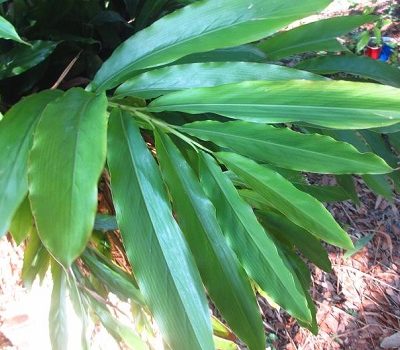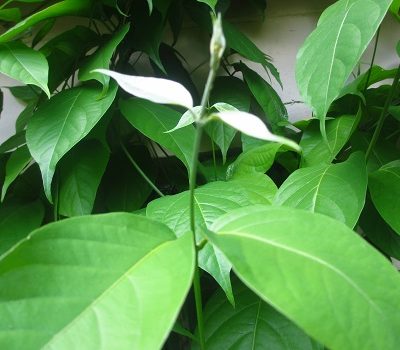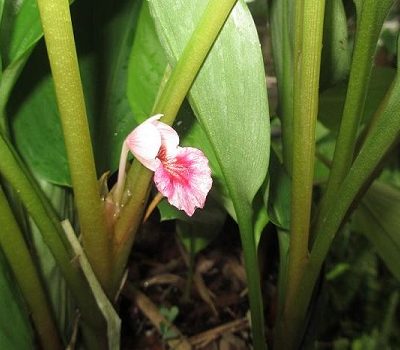Greater galangal
If you have tasted Thai food, then you have probably tasted galangal. It is a key ingredient in Thai green curry paste, but most Americans have never used or even seen the spice. Galangal is used much like regular culinary ginger, but the flavor is much different. it is frequently described as having a pine-like flavor.
It is an essential ingredient for many different Asian dishes.
This tall evergreen ginger can be grown in varying light conditions. I’ve grown it in full sun as well as full shade, but in between those two, in part shade, is best. Either way, it grows really fast and gets really tall. It will bloom and the flowers are pretty in their own way, but no one would grow this plant for its flowers. People might grow it just for the foliage though, which is tall and stately.
It has a very tall and upright growth habit, quickly reaching a height of 8 feet tall. This ginger does not go through an obligate dormancy. In Winter, it stops growing, but the foliage remains green until spring when it sends up new shoots. The rhizomes can be harvested at any time.
Unless you have a greenhouse, this is not a good choice of plants for Northern gardeners.
Origin
Southeast Asia.
Family
Zingiberaceae.
Binomial nomenclature
Alpinia galanga.
Common names
Greater galangal.
Description
A tall, upright growing, evergreen ginger. The large rhizomes have a pungent, pine like flavor. Greenish white flowers are borne on terminal inflorescences.
Height
6′-8′ tall.
Temperature/Zone
zone 9b, 32°F. Frost will burn it, but it tolerates above freezing Winter temperatures fairly well.
Light
Part sun to shade.
Water
Keep them evenly hydrated in Spring and Summer, but back off on the watering in Winter.
Fertilizer
I use a fertilizer formulated for tomatoes for all of my gingers
Cultivation
Alpinia galanga is a very easy plant so grow, provided that your climate is appropriate for it. It has thrived for me in poor sandy soil with no amendments or fertilizer. It does get rather large rather quickly, so if it is grown in a container, give it at least five gallons, but a larger container would be better.
Pests
I have not found any pests to be a problem for this plant in Florida.









